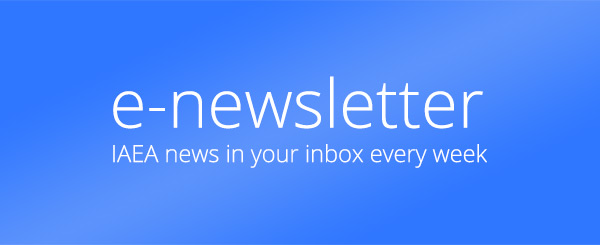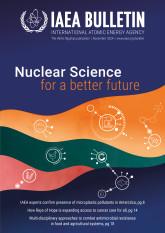The world faces challenges, some of them existential and others very serious. Food insecurity is on the rise and freshwater resources are shrinking. The natural environment is under threat. Climate change is an unwelcome accelerant. The burden of these challenges disproportionately affects people who live in developing economies, particularly low and middle income countries (LMICs). Life-saving cancer treatments are unevenly distributed, meaning that the disease is curable in some countries and a death sentence in others.
For nearly 60 years, the IAEA has been helping to address such challenges and to facilitate cross-border collaboration. It has helped to dramatically increase Member States’ capacity to use nuclear science and technology towards the achievement of the Sustainable Development Goals (SDGs). The uses of nuclear are so wide-ranging that they directly support more than half the SDGs and indirectly support all of them.
The IAEA’s 12 laboratories in Austria and Monaco are unique in the United Nations (UN) system. They translate nuclear research into practical applications in food and agriculture, water resource management, marine monitoring and cancer care, while also providing training and capacity building for Member States.
The IAEA’s technical cooperation (TC) programme transfers nuclear technologies and applications to Member States. By sharing knowledge, building partnerships and facilitating regional cooperation, the TC programme helps countries sustainably address their most urgent priorities, from food and agriculture to energy.
This issue of the IAEA Bulletin showcases some of the ways in which nuclear applications are helping to increase food security, improve water resource management, protect our oceans, tackle the impacts of climate change and narrow the gap in cancer care in LMICs.
The IAEA launched ZODIAC in 2020 to help countries detect, identify and contain outbreaks of diseases originating in animals that can be transmitted to humans. It is our contribution to preventing the next pandemic. Staff at about 100 national laboratories are now trained and 50 laboratories are newly equipped to use nuclear techniques to track diseases, share information and collaborate.
A recent IAEA study found that plastic pollution can be detected even in the remote biomes of Antarctica. Our NUTEC Plastics initiative helps countries fight plastic pollution and is now working with 63 of them to trace the movement of microplastics through ecosystems. Another 31 countries are developing new plastic upcycling and recycling processes using radiation technology.
The number of cancer sufferers around the world is expected to double by 2045. Despite advances in treatment, access to cancer care is uneven. Millions of Africans still have no access to radiotherapy, essential for about half of all cancer cases. Rays of Hope improves diagnosis and treatment for those in need. Since 2022, more than 80 countries have requested support, including more than 20 requesting specialized radiotherapy or medical imaging equipment. Ten cancer care and research institutions, spread across all regions, are now Rays of Hope Anchor Centres, serving as regional hubs for knowledge and training.
As part of the IAEA’s long partnership with the Food and Agriculture Organization of the United Nations, the Atoms4Food initiative builds on decades of expertise in soil, crop and coastal management and nutrition, supporting countries in their efforts to improve food security and address hunger. The initiative offers customized strategies to increase agricultural productivity by developing new crop variants, minimizing food loss, ensuring food safety, enhancing nutrition and adapting to climate challenges.
The IAEA’s Ministerial Conference on Nuclear Science, Technology and Applications and the Technical Cooperation Programme will focus on innovation and collaboration to tackle global challenges to human health and the health of our planet. Nuclear science and technology are part of the solution, and there is even more benefit they could bring.



